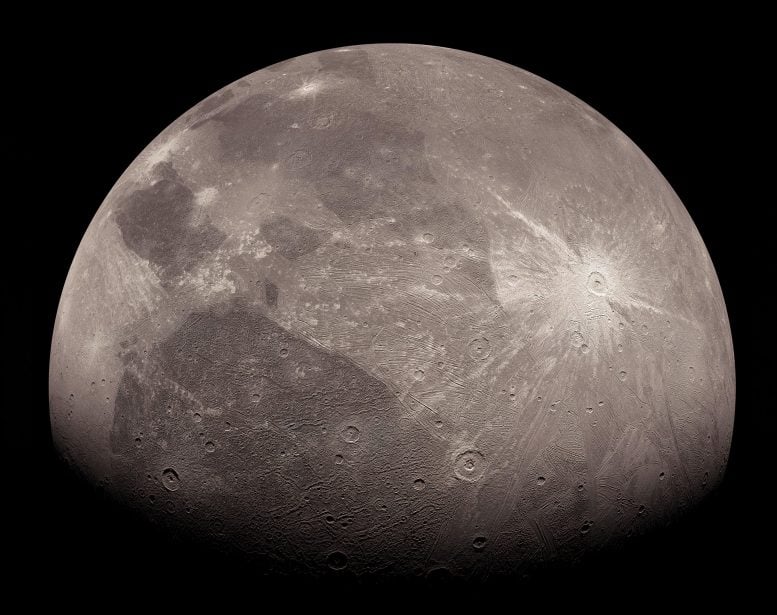
This enhanced image of the Jovian moon Ganymede was obtained by the JunoCam imager aboard NASA’s Juno spacecraft during the mission’s June 7, 2021, flyby of the icy moon. Data from that pass has been used to detect the presence of salts and organics on Ganymede. Credit: NASA/JPL-Caltech/SwRI/MSSS/Kalleheikki Kannisto © CC BY
Data collected by NASA’s Juno mission indicates a briny past may be bubbling to the surface on Jupiter’s largest moon.
NASA’s Juno mission has observed mineral salts and organic compounds on the surface of Jupiter’s moon Ganymede. Data for this discovery was collected by the Jovian InfraRed Auroral Mapper (JIRAM) spectrometer aboard the spacecraft during a close flyby of the icy moon. The findings, which could help scientists better understand the origin of Ganymede and the composition of its deep ocean, were published on October 30 in the journal Nature Astronomy.
Larger than the planet Mercury, Ganymede is the biggest of Jupiter’s moons and has long been of great interest to scientists due to the vast internal ocean of water hidden beneath its icy crust. Previous spectroscopic observations by NASA’s Galileo spacecraft and Hubble Space Telescope as well as the European Southern Observatory’s Very Large Telescope hinted at the presence of salts and organics, but the spatial resolution of those observations was too low to make a determination.
On June 7, 2021, NASA’s Juno spacecraft flew closer to Jupiter’s ice-encrusted moon Ganymede than any spacecraft in more than two decades. Less than a day later, Juno made its 34th flyby of Jupiter. This animation provides a “starship captain” point of view of each flyby. For both worlds, JunoCam images were orthographically projected onto a digital sphere and used to create the flyby animation. Synthetic frames were added to provide views of approach and departure for both Ganymede and Jupiter. Credit: NASA/JPL-Caltech/SwRI/MSSS
Juno’s Close Approach and Findings
On June 7, 2021, Juno flew over Ganymede (see video above) at a minimum altitude of 650 miles (1,046 kilometers). Shortly after the time of closest approach, the JIRAM instrument acquired infrared images and infrared spectra (essentially the chemical fingerprints of materials, based on how they reflect light) of the moon’s surface. Built by the Italian Space Agency, Agenzia Spaziale Italiana, JIRAM was designed to capture the infrared light (invisible to the naked eye) that emerges from deep inside Jupiter, probing the weather layer down to 30 to 45 miles (50 to 70 kilometers) below the gas giant’s cloud tops. But the instrument has also been used to offer insights into the terrain of moons Io, Europa, Ganymede, and Callisto (known collectively as the Galilean moons for their discoverer, Galileo).
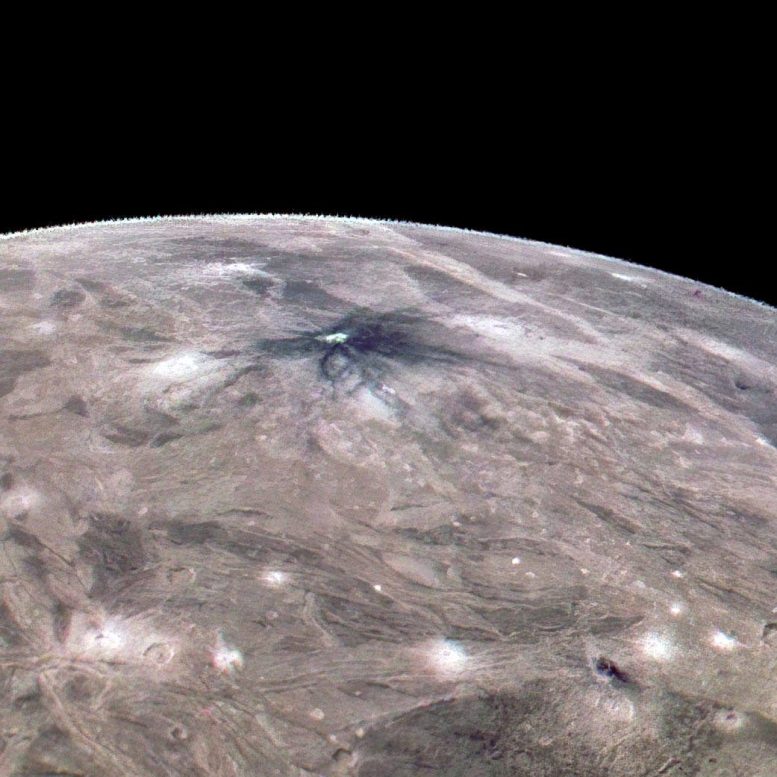
This look at the complex surface of Jupiter’s moon Ganymede came from NASA’s Juno mission during a close pass in June 2021. At closest approach, the spacecraft came within just 650 miles (1,046 kilometers) of Ganymede’s surface. Credit: NASA/JPL-Caltech/SwRI/MSSS, Image processing by Thomas Thomopoulos
The JIRAM data of Ganymede obtained during the flyby achieved an unprecedented spatial resolution for infrared spectroscopy – better than 0.62 miles (1 kilometer) per pixel. With it, Juno scientists were able to detect and analyze the unique spectral features of non-water-ice materials, including hydrated sodium chloride, ammonium chloride, sodium bicarbonate, and possibly aliphatic aldehydes.
“The presence of ammoniated salts suggests that Ganymede may have accumulated materials cold enough to condense ammonia during its formation,” said Federico Tosi, a Juno co-investigator from Italy’s National Institute for Astrophysics in Rome and lead author of the paper. “The carbonate salts could be remnants of carbon dioxide-rich ices.”
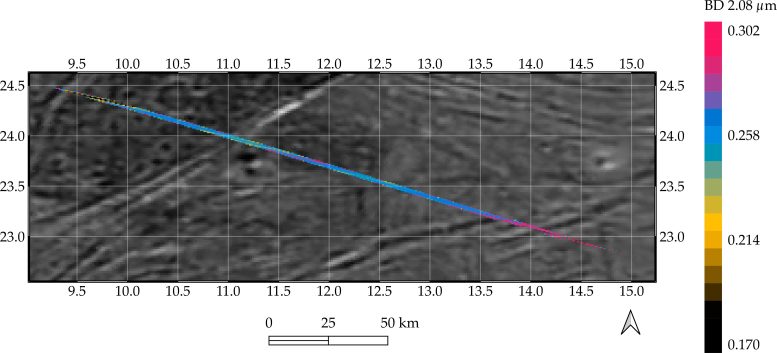
Processed data from the Jovian InfraRed Auroral Mapper (JIRAM) spectrometer aboard NASA’s Juno mission is superimposed on a mosaic of optical images from the agency’s Galileo and Voyager spacecraft that show grooved terrain on Jupiter’s moon Ganymede. Credit: NASA/JPL-Caltech/SwRI/ASI/INAF/JIRAM/Brown University
Exploring Other Jovian Worlds
Previous modeling of Ganymede’s magnetic field determined the moon’s equatorial region, up to a latitude of about 40 degrees, is shielded from the energetic electron and heavy ion bombardment created by Jupiter’s hellish magnetic field. The presence of such particle fluxes is well known to negatively impact salts and organics.
During the June 2021 flyby, JIRAM covered a narrow range of latitudes (10 degrees north to 30 degrees north) and a broader range of longitudes (minus 35 degrees east to 40 degrees east) in the Jupiter-facing hemisphere.
“We found the greatest abundance of salts and organics in the dark and bright terrains at latitudes protected by the magnetic field,” said Scott Bolton, Juno’s principal investigator from the Southwest Research Institute in San Antonio. “This suggests we are seeing the remnants of a deep ocean brine that reached the surface of this frozen world.”
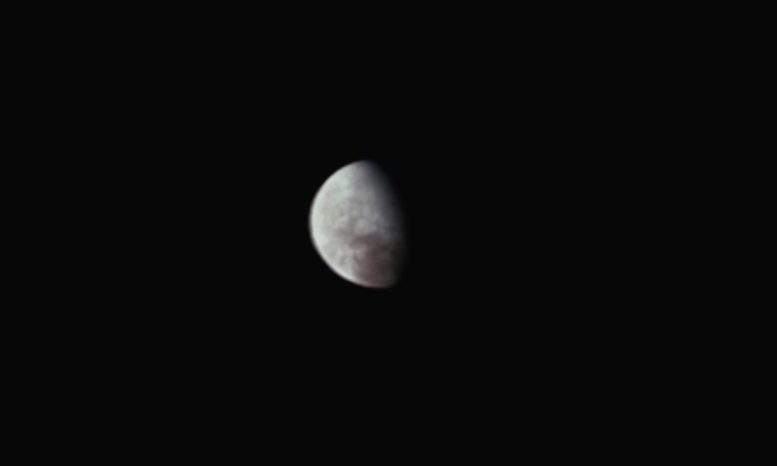
This image of Jupiter’s moon Europa was taken by the JunoCam imager aboard NASA’s Juno spacecraft on October 16, 2021, from a distance of about 51,000 miles (82,000 kilometers). Credit: Image data: NASA/JPL-Caltech/SwRI/MSSS. Image processing: Andrea Luck CC BY
Ganymede is not the only Jovian world Juno has flown by. The moon Europa, thought to harbor an ocean under its icy crust, also came under Juno’s gaze, first in October 2021 (see image above) and then in September 2022. Now Io is receiving the flyby treatment. The next close approach to that volcano-festooned world is scheduled for Dec. 30, when the spacecraft will come within 932 miles (1,500 kilometers) of Io’s surface.
Reference: “Salts and organics on Ganymede’s surface observed by the JIRAM spectrometer onboard Juno” by Federico Tosi, Alessandro Mura, Alessandra Cofano, Francesca Zambon, Christopher R. Glein, Mauro Ciarniello, Jonathan I. Lunine, Giuseppe Piccioni, Christina Plainaki, Roberto Sordini, Alberto Adriani, Scott J. Bolton, Candice J. Hansen, Tom A. Nordheim, Alessandro Moirano, Livio Agostini, Francesca Altieri, Shawn M. Brooks, Andrea Cicchetti, Bianca Maria Dinelli, Davide Grassi, Alessandra Migliorini, Maria Luisa Moriconi, Raffaella Noschese, Pietro Scarica, Giuseppe Sindoni, Stefania Stefani and Diego Turrini, 30 October 2023, Nature Astronomy.
DOI: 10.1038/s41550-023-02107-5
NASA’s Jet Propulsion Laboratory (JPL), a division of Caltech in Pasadena, California, manages the Juno mission for the principal investigator, Scott Bolton, of the Southwest Research Institute in San Antonio. Juno is part of NASA’s New Frontiers Program, which is managed at NASA’s Marshall Space Flight Center in Huntsville, Alabama, for the agency’s Science Mission Directorate in Washington. The Italian Space Agency (ASI) funded the Jovian InfraRed Auroral Mapper. Lockheed Martin Space in Denver built and operates the spacecraft.




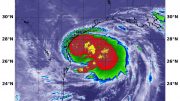



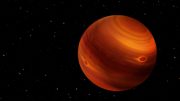
Be the first to comment on "NASA’s Juno Mission Discovers Organics on Jupiter’s Giant Moon Ganymede"